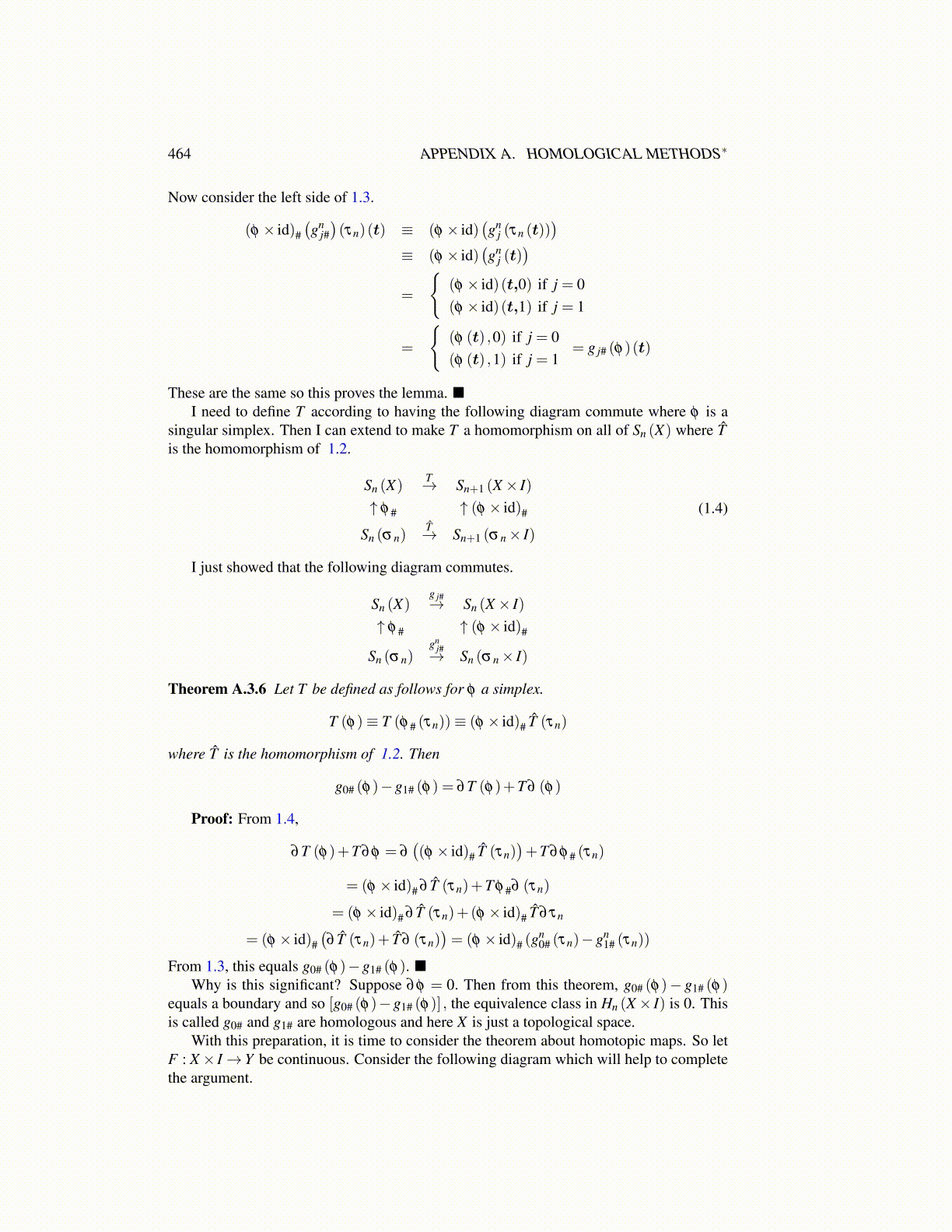
464 APPENDIX A. HOMOLOGICAL METHODS∗
Now consider the left side of 1.3.
(φ × id)#(gn
j#)(τn)(t) ≡ (φ × id)
(gn
j (τn (t)))
≡ (φ × id)(gn
j (t))
=
{(φ × id)(t,0) if j = 0(φ × id)(t,1) if j = 1
=
{(φ (t) ,0) if j = 0(φ (t) ,1) if j = 1
= g j# (φ)(t)
These are the same so this proves the lemma. ■I need to define T according to having the following diagram commute where φ is a
singular simplex. Then I can extend to make T a homomorphism on all of Sn (X) where T̂is the homomorphism of 1.2.
Sn (X)T→ Sn+1 (X× I)
↑ φ # ↑ (φ × id)#
Sn (σn)T̂→ Sn+1 (σn× I)
(1.4)
I just showed that the following diagram commutes.
Sn (X)g j#→ Sn (X× I)
↑ φ # ↑ (φ × id)#
Sn (σn)gn
j#→ Sn (σn× I)
Theorem A.3.6 Let T be defined as follows for φ a simplex.
T (φ)≡ T (φ # (τn))≡ (φ × id)# T̂ (τn)
where T̂ is the homomorphism of 1.2. Then
g0# (φ)−g1# (φ) = ∂T (φ)+T ∂ (φ)
Proof: From 1.4,
∂T (φ)+T ∂φ = ∂((φ × id)# T̂ (τn)
)+T ∂φ # (τn)
= (φ × id)# ∂ T̂ (τn)+T φ #∂ (τn)
= (φ × id)# ∂ T̂ (τn)+(φ × id)# T̂ ∂τn
= (φ × id)#(∂ T̂ (τn)+ T̂ ∂ (τn)
)= (φ × id)# (g
n0# (τn)−gn
1# (τn))
From 1.3, this equals g0# (φ)−g1# (φ). ■Why is this significant? Suppose ∂φ = 0. Then from this theorem, g0# (φ)− g1# (φ)
equals a boundary and so [g0# (φ)−g1# (φ)] , the equivalence class in Hn (X× I) is 0. Thisis called g0# and g1# are homologous and here X is just a topological space.
With this preparation, it is time to consider the theorem about homotopic maps. So letF : X× I→ Y be continuous. Consider the following diagram which will help to completethe argument.